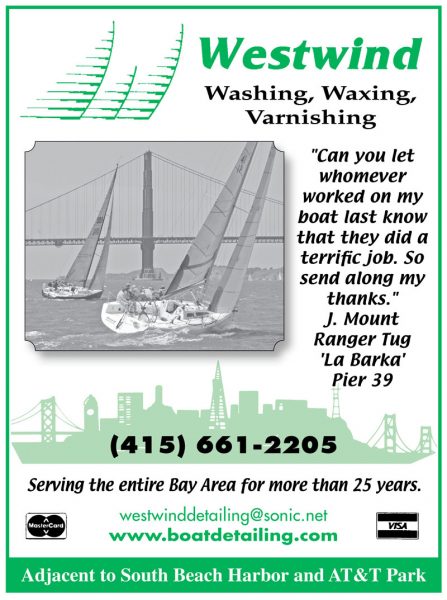
Astounding Route du Rhum Finish
The 11th edition of the Route du Rhum solo transatlantic race has been a barn-burner since the get-go, with just two boats in contention to finish first since the early stages.
Ultime Finish
Many followers thought that François Gabart and MACIF would cruise to an easy win in the Ultime category for maxi-trimarans. Amassing a lead of some 160 miles while in the trade winds, ‘Golden Boy’ Gabart looked to have his rival Francis Joyon on IDEC Sport well under control until hitting light air upon approach to the island of Guadeloupe. As the winds went light and MACIF came into view of spectators and cameras, it became clear that Gabart had been nursing a wounded boat. MACIF had obviously suffered the loss of one foil and one rudder. As a result, Joyon and IDEC Sport, bringing more breeze from behind, had cut Gabart’s lead down to less than 40 miles and dropping.
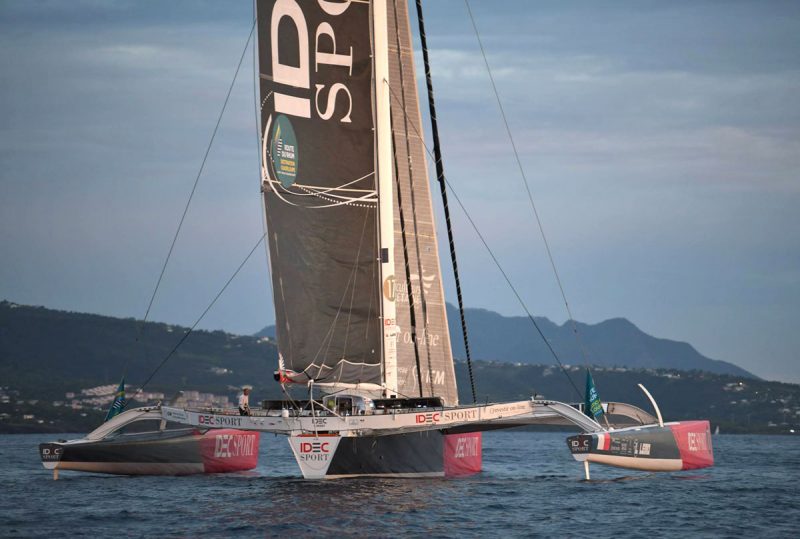
The course requires sailors to sail around the lee side of the island before reaching the finish in Pointe-à-Pitre, and Gabart slowed to a halt, while Joyon found a passing lane inside and, in slow-motion, passed MACIF in the middle of the night. With spectator boats all around and the lights of shore as the backdrop, these two legendary Frenchmen on massive trimarans put in a Herculean effort to effectively match-race each other to the finish in very light winds. After more than 3,500 miles, the distance between the two was now being measured in meters. In the end, the intrepid 62-year-old sailor Francis Joyon has achieved the seemingly impossible and has won the Route du Rhum on his seventh attempt. Proving once again that age and treachery oftentimes triumph over youth and skill, Joyon’s legendary boat held together better than the fleet of newer, seemingly more fragile foilers, while Francis himself proved unrelenting and incredibly effective when pitted against a sailor nearly half his age who has become the sailor of his generation.
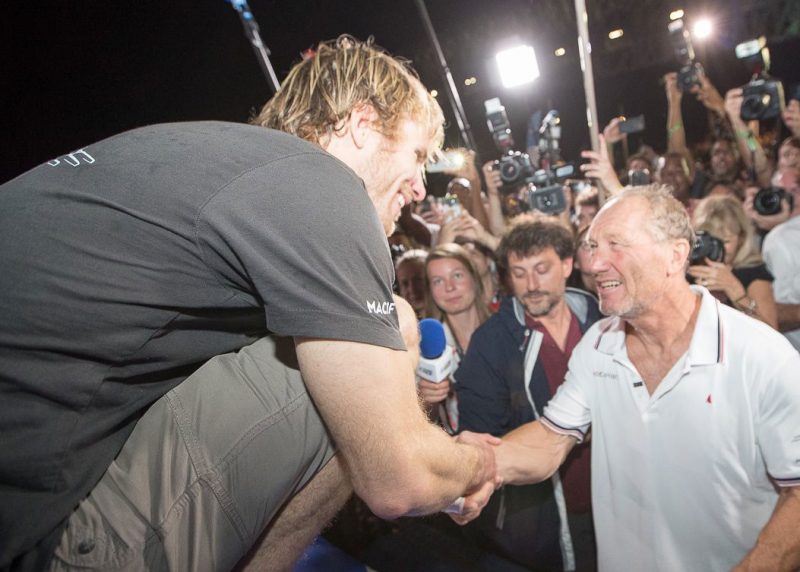
IMOCA 60 Fleet
Behind the two Ultimes, the IMOCA fleet continues toward the Caribbean and looks to be firmly under control by Britain’s Alex Thomson on Hugo Boss. Thomson has continued to extend his lead and now has a 135-mile cushion over Paul Meilhat on SMA, who is sailing a fantastic race on his boat with straight daggerboards. Vincent Riou on PRB and Yann Elies on UCAR – St. Michel are both closing on Meilhat and should challenge for second place soon. Thomson, a consummate professional, will surely remain focused until the end, as Joyon’s comeback serves as a stark reminder that anything can happen in ocean racing. Behind the leading IMOCAs, several boats that made pit stops to repair damage have restarted, including the high-flying, headline-gathering Charal, skippered by three-time Figaro winner Jeremie Beyou.
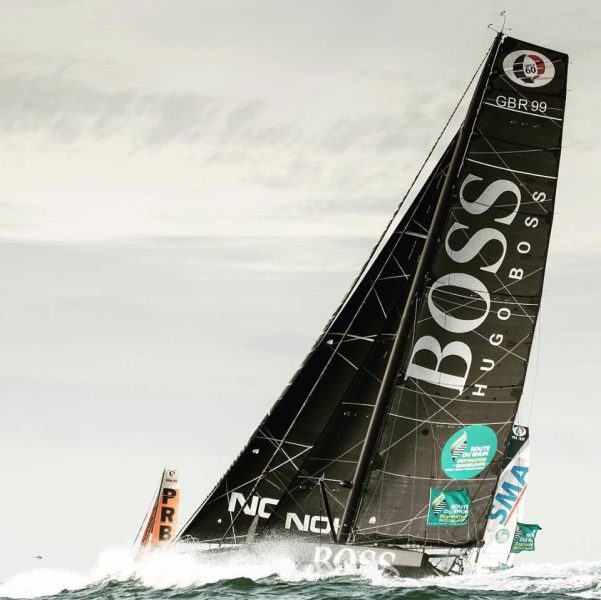
Class 40 Fleet
In the Class 40 division, pre-race favorite Yoann Richomme has a 100-mile lead over Aymeric Chapellier and Phil Sharp. Armel Tripon has jumped out to a commanding 375-mile lead over the rest of the Multi 50 trimaran fleet as most of the other boats needed to take pit stops to repair damage and/or avoid weather. The majority of the competitors are still less than halfway to Guadeloupe.
Caption Contest(!)
Latitude Nation, here’s your November Caption Contest(!). This is our first-ever photo from the Facebook Yacht Club, so we cannot attribute this shot to any one person — but thanks to reader Jere Visalli for sending it in.
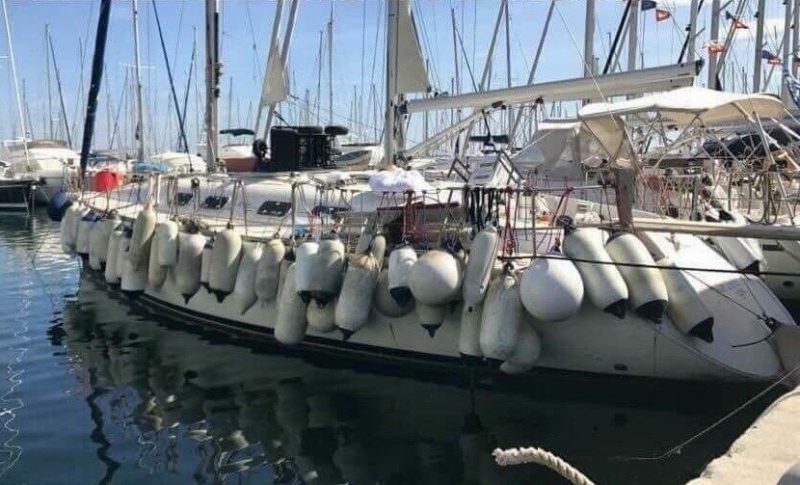
You can either send your entries here, or comment on this post below. Good luck!
Ad: Westwind Boat Detailing
The San Francisco Science and Sailing Center
In the ‘old days’, a lot of deals were formed in secretive, smoke-filled rooms. In the case of the just-announced San Francisco Science and Sailing Center, the great outdoors was smoke- filled and the organizers presented their plan in the clean air of the brightly lit SFMOMA Gallery in the Fort Mason Center overlooking the Bay.
On Saturday, Jim Hancock, dedicated Bay Area sailor, cruiser, sailing instructor and now president and founder of the SFSSC, showcased plans to dramatically enhance the growing Treasure Island sailing hub with a museum of sailing, which will include an interactive, hands-on learning facility that will focus on the physical sciences and math, and provide STEM learning experiences for everyone from five to 95.
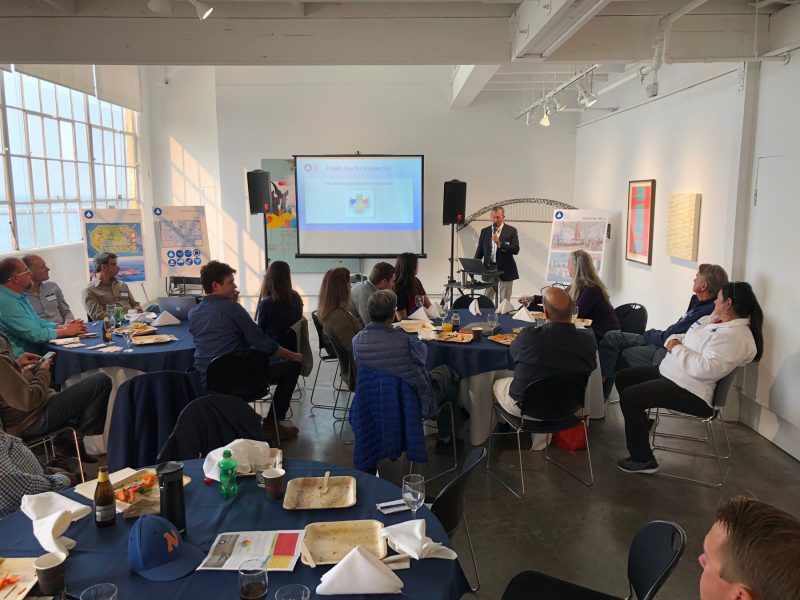
“The timing is ideal with the redevelopment of Treasure Island underway, the arrival of US Sailing’s FAST Olympic training center, and the long-term success of the Treasure Island Sailing Center,” said Hancock.
Travis Lund, TISC’s executive director, is on the board and working to support the development of this unique, world-class museum in the nexus of the Bay Area, where, oddly, 95% of the population is disconnected from one of its great recreational resources: sailing. It is inspiring to see the energy coming forward to keep the sport vital and available, and to have a science angle applied.
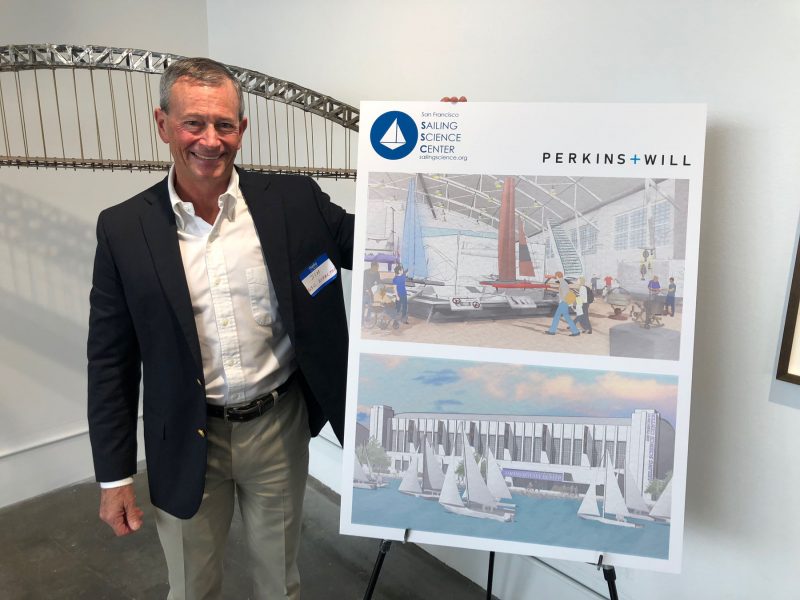
While plans for the San Francisco Science and Sailing Center are clearly preliminary, there has already been considerable development, including incorporating as a nonprofit in January 2018 and the formation of the board. With a team of enthusiastic sailors with a passion for sharing the sport’s many qualities and contributions, the SFSSC will also serve as a learning platform to pass on lessons from technology, sustainability, history and physics in a fun, educational environment.
Ha-Ha Epilogue
Readers — after having light wind and an even lighter Internet connection, the Grand Poobah has sent this 25th Anniversary Baja Ha-Ha postgame analysis:
A quarter century of Baja Ha-Ha’s — the 750-mile cruisers’ rally between San Diego and Cabo San Lucas with R&R stops at Turtle Bay and Bahia Santa Maria — is now part of sailing history. The record 551 mariners aboard the 149 boats that participated this year bring the event’s cumulative totals to over 10,000 sailors on over 3,000 boats.
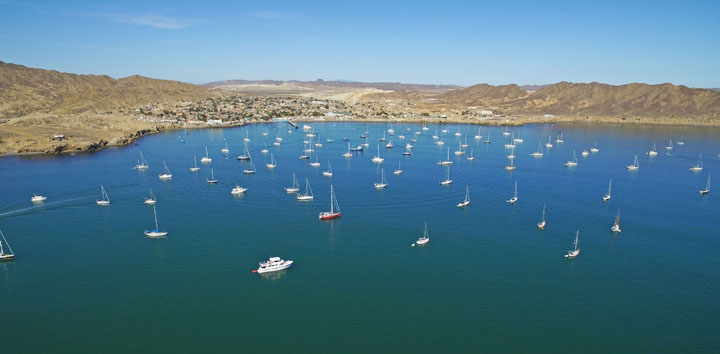
At 750 miles per participant, that’s a total of 7.5 million ocean miles. Or the equivalent to about 288 times around the world. After the Atlantic Rally for Cruisers, the Ha-Ha is the biggest cruising rally in the world.
This year’s fleet ranged in size from Richard Carr’s Santa Cruz-based Mirror 19, which had received special dispensation for being less than the normally required 27-ft length, to Lowell and Julie Potiker’s Port Townsend, WA-based Hylas 70 Runaway.
Of particular note this year was the explosion in multihull entries, as the previous record of 14 was crushed by this year’s fleet of 24 multihulls. They ranged in size from Bryan Martin’s Santa Cruz-based Corsair 31 trimaran Kailani to two 55-ft catamarans — Glenn Howell’s Reno-based Atlantic 55 Rocketeer, and Erik Laakmann’s Seattle-based Outremer 55 Light Zephyr.
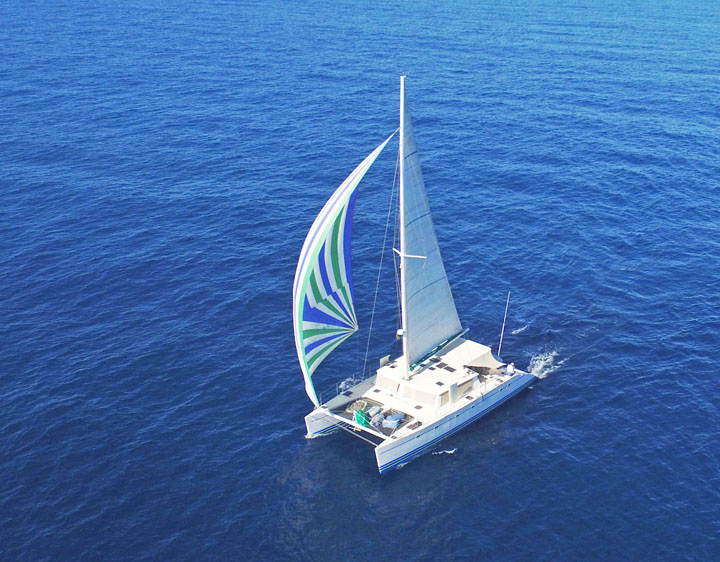
It’s a good thing that the Ha-Ha is so much more than just sailing, because this year’s event featured the least wind of any Ha-Ha to date. The 360-mile first leg and the previously always-reliable 240-mile second leg were bedeviled by the lack of good sailing breezes, and only the 175-mile final leg featured winds typical of or better than previous Ha-Ha’s.
Were the Ha-Ha a race, we suspect most of the fleet would have retired for lack of wind. Thanks to the Ha-Ha’s ‘rolling’ (aka motoring) starts and skipper’s discretion to motor as much as desired, there was only one weather-related drop-out. That was Richard Carr, an illegal singlehander, who had engine problems and was running out of fuel. So he bailed at Punta Colnett.
What else is there to the Ha-Ha besides sailing? There’s the Costume Kick-off party at West Marine Superstore in San Diego; the opening parade celebrated by three Port of San Diego fireboats squirting for all they are worth; the daily roll calls, either electronically or via SSB; the much longer in-port VHF nets; the epic ‘everybody plays’ cruisers and Mexican kids baseball game in Turtle Bay; a massive beach party in Turtle Bay; a rock ‘n roll party at Bahia Santa Maria; a silly dancefest at Squid Roe in Cabo; and the From Here to Eternity Kissing Contest in the warm waters of Medano Beach.
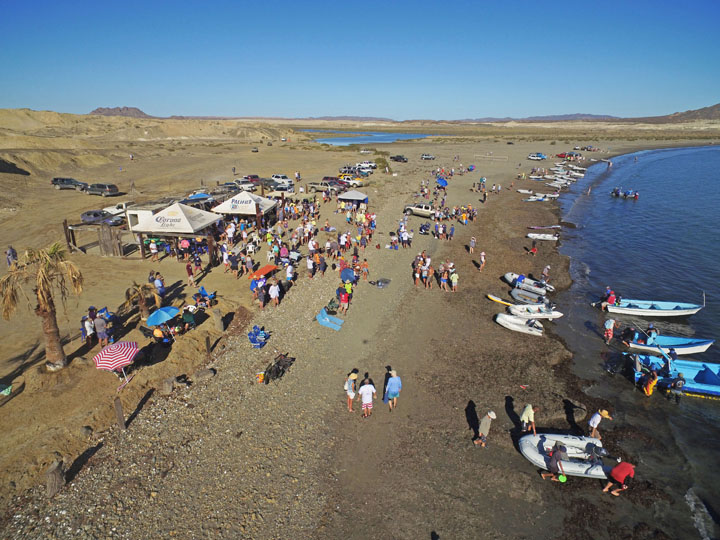
The nice thing about the Ha-Ha is that all the activities are optional. People could participate in as many or as few social events as possible. If, for example, someone wanted to dance and otherwise socialize intensely, there were plenty of opportunities for that. But if someone were an introvert, as several participants described themselves, there was every opportunity to be quiet and alone. Everyone could make the Ha-Ha into the kind of event they wanted it to be.
For most participants, the highlight of the Ha-Ha was the powerful sense of community that evolved. Playing a big part in the development of fleet cohesion was the help rendered to Ha-Ha participants in need by other Ha-Ha participants.
For example, once the fleet had arrived in Turtle Bay, the ‘mechanical’ part of the net was filled with requests for various types of assistance. Help was needed understanding SSB radios, sussing out alternator and other charging problems, fixing diesels, understanding autopilots, repairing sails, finding obscure plumbing parts, and much more. While not all problems were solved — or every part sourced — a majority were, giving folks a warm and fuzzy feeling that they weren’t alone on the big ocean.
Even more important than mechanical help was medical assistance. When a crew member on Doug Erickson’s Long Beach-based Ericson 39 Cat’s Paw was reported experiencing heart attack symptoms, several doctors from Bob Bavasi’s Everett, WA-based Echo Juliet rushed to the scene. Fortunately, the ‘patient’ was just suffering from dehydration.
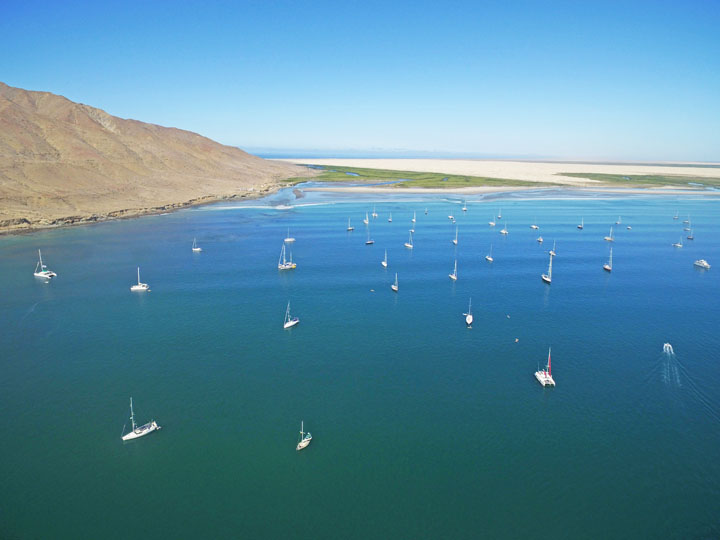
Later a young woman aboard the San Diego-based Hunter 466 Amelia Rose was suspected of having a urinary tract issue. Not only was a test kit found in the fleet, someone had the appropriate medicine. And after a bad bump to the head of a crewmember on Philip Jonckheer’s Palm Beach, FL-based Jeanneau 45 Bow-Tied, a physician in the fleet glued the victim’s eyelid back together.
Fleet assistance was also in evidence at sea. When Kenneth and Cheryl Cooper’s Nanaimo-based Bavaria 42 Sedna got hung up on a fishing net about 30 miles north of Cabo San Lazaro in the middle of the night, Derick and Barb Sindell’s Vancouver-based Lagoon 380 Stray Cat 2 came to the rescue, taking them in tow so they didn’t have to dive on their prop at night or in the middle of the ocean. Cheryl later reported that her husband, a normally stoic retired police officer, shed a tear while thanking all Ha-Ha boats that had offered help.
If there was a good side of the unusually light conditions, it was that an unprecedented amount of sea life or other wildlife was observed. The fishing was great, with dorado and even ahi starting to be landed just a few hours south of San Diego. Various types of marlin were caught in surprising numbers. Most were released, but one boat kept theirs, cooked it, and declared it tasted like halibut. Marlin that tastes like halibut?
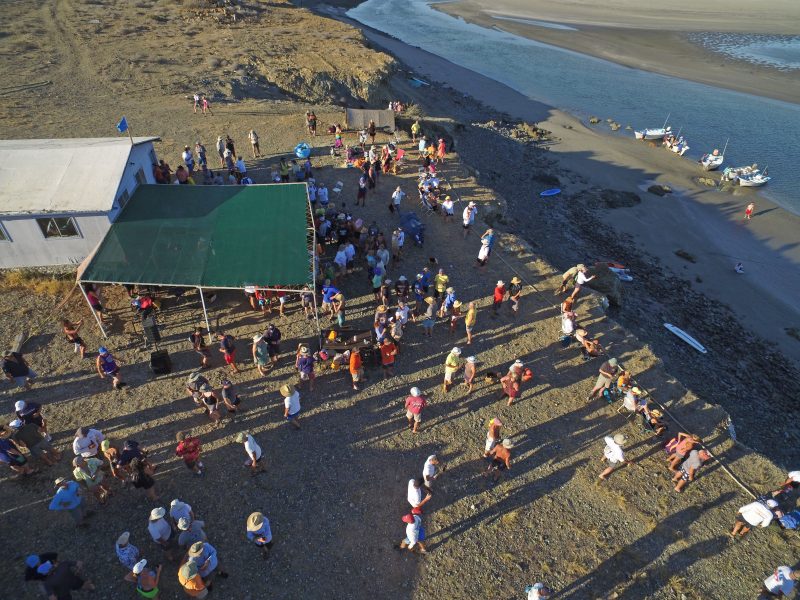
The 2018 Ha-Ha was the Year of the Turtle. It was a rare Ha-Ha boat that didn’t spot more than a few of them. Kristie Home of the San Francisco-based Hallberg-Rassy 39 Rejoice counted something like 30 in less than an hour before giving up.
Even better than seeing a turtle was rescuing one. James Denmark and Eileen Daniel aboard the Pennsylvania-based Nonsuch 30 C.A.T. spotted a turtle that was distressed by the fact it had a fish hook embedded in its head. James jumped in and was successful in removing the fish hook.
Many first-time offshore sailors were thrilled by the antics of dolphins, particularly when they — or rays — took to the air at night.
Whales migrate south at the same time as the Ha-Ha fleet, and were spotted regularly. Sometimes too close for comfort, as one breached just a few yards from a boat during a change of watch. Another whale spun a boat 360 degrees! Yet another boat was visited by an owl, an animal species not related to the whale and not normally found at sea.
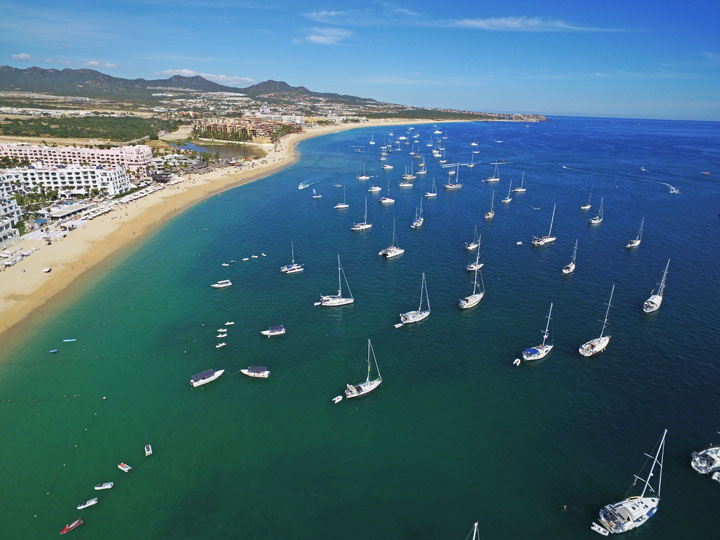
Nature put on a brilliant display, particularly south of Cedros where the skies were blue. Sunrises and sunsets were dramatic, and many sailors reported seeing the green flash — or at least a green dot. The evening celestial displays, starring the Milky Way, were fantastic. And never more so than during the tropical third leg.
By the middle of the second leg, the water temps were up to the mid- 70s, so more than a few crews took the opportunity for an always- exciting middle-of-the-ocean swim. Nobody enjoyed these more than the folks from the chilly waters of the Pacific Northwest.
No event is perfect, of course. Thanks to miscommunication between the Ha-Ha and longtime Ha-Ha friends at IGY Marina Cabo San Lucas, a conflict with a fishing tournament and the basing of a space-hogging 273-ft megayacht meant only a few Ha-Ha boats got into the marina. Fortunately, anchoring conditions out in the bay at Cabo were unusually good.
The Poobah, Assistant Poobah Patsy Verhoeven, and Chief of Security Doña Rosa Patricia Andre de Mallorca Spindler received countless compliments about the event. Many described the Ha-Ha as “absolutely fabulous,” while others merely allowed that it was “the greatest adventure” of their lives.
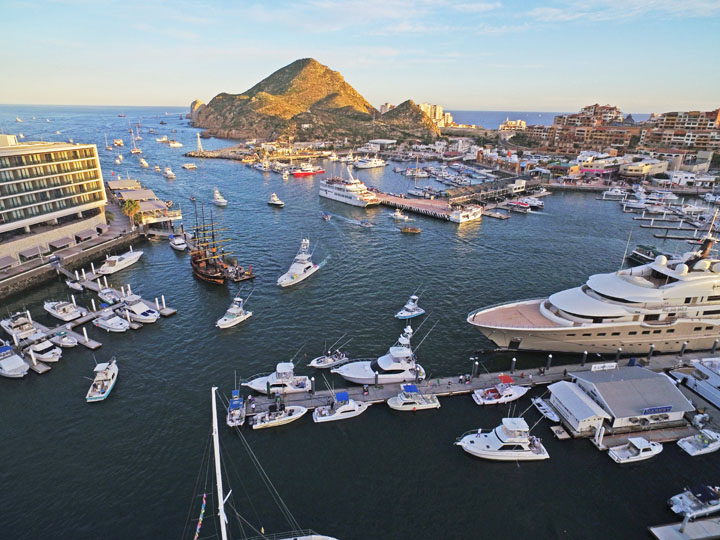
The Poobah thinks that Paul and Suzette Baker of Seattle, who crewed aboard Kent Powley’s Seattle-based Jeanneau 45 Coquette, put the Ha-Ha in the best context. While the couple were only crew this year, they’d done the Ha-Ha in 2000 with their Cal 35 Altair prior to the start of a six-year circumnavigation. This was their verdict on the event:
“The Ha-Ha is the best warm-up and send-off for world cruisers. It gives new cruisers confidence to talk on the radio, catch fish, make repairs, be offshore — and they make 500 cruising friends right off the bat. We did Ha-Ha #7, we did Ha-Ha #25, and we’ll be back to do another with our Sceptre 41 in a few years. If we lived in California, we’d do the Ha-Ha every year.”

